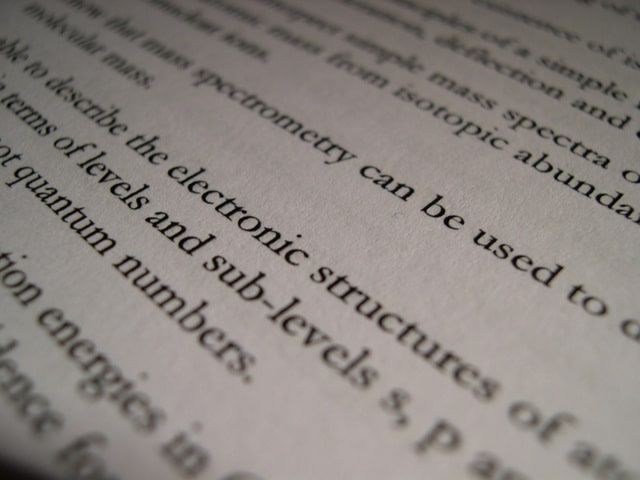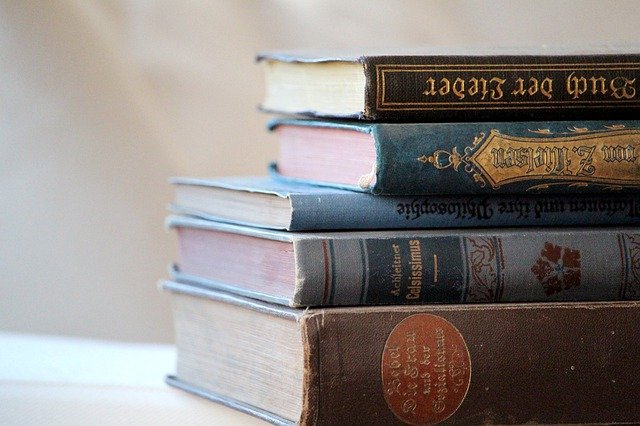Lyric genre: definition, meaning, characteristics, origin and subgenres.
Contents
What is the lyric genre?
With the passage of time, literature has undergone several changes that have generated the need for a classification of the works produced in different periods of history, along with their characteristics and modes of writing that allow them to be distinguished from each other, which is why the lyric genre was born as one of the oldest known.
Characterized mainly by the expression of the author’s feelings, the lyric genre is one of the members of the literary genres with the greatest ancient production, along with a series of subgenres that have emerged in its development. Poetry is the most frequent expression of lyric poetry.

Meaning of the lyric genre
The lyric genre, taking the term -lyric- or -lyric-, comes from the Latin lyrĭcus, which refers to lyre, a musical instrument of antiquity with which the artistic expressions of the time were sung or recited. Thus, it was sung in verse and recited in the first person. The content was permeated by the most intimate feelings of the authors.
Definition of the lyric genre
The lyric as a literary genre comprises compositions of subjective character, especially works developed in verse that are neither dramatic nor epic. It is the genre that focuses on the expression of the author’s most intimate emotions, feelings and sensations.
According to the origin of the term, lyric is understood as any composition that was accompanied by the lyre, thus building a kind of poetry for singing, although it includes other spaces that we will see in the subgenres. These works, in principle, were not intended for reading, but were composed to be recited in front of an audience accompanied by music, in this case, the lyre, in a space open to the disposition of the spectators.
What is the function of the lyric genre?
Its main objective is to transmit feelings, ideas and sensations directly through words and often using poetic images that are created from a careful selection of the words included. On the other hand, it can also become a reference that inspires dreamy sensations for the reader.
What are the types of lyric genres?
The sub-genres of the lyric genre are: the song, the eclogue, the elegy, the satire, the hymn, the epigram, the madrigal, the letrilla, the sonnet, the pastorela, the villancico and the odes.
Here you can see all the lyrical subgenres
Song
It is one of the most important and widespread types of composition worldwide, which is why it has also undergone a great transformation throughout its temporal and spatial journey. It comes from the Latin canto, which refers to a composition that can be sung, where its lyrics express an emotion, feeling, experience, memory, etc. Nowadays there is a great variety of models, genres and rhythms in which it is possible to find different types of songs.
Eclogue
It is characterized for being a composition with an amorous content in most of the occasions. The eclogue was a subgenre spread mainly by shepherds, who moved in different regions, towns and communities singing compositions that related their amorous content to their experience of life in the countryside. It is a short composition that can be in the form of a monologue or dialogue.
Elegy
The main feature of this type of composition has to do with the subject matter it focuses on and the tone it usually uses in its writing, since it is a subgenre that usually relates themes of sadness and pain, reflected in an attitude of lamentation and disappointment in the face of different events and obstacles in the life of the human being. It usually includes situations such as the death of a loved one, a love breakup, disillusionment with life, among others.
Satire
Although it is a lyrical subgenre, the truth is that it has been a format that has also moved to other fields not only in literature, but also in other artistic manifestations such as graphic and scenic art. In short, it is an expression of indignation written in this field in verse and prose, where a criticism, opposition or position related to aspects of human life such as vices, abuses, among others, is reflected through irony.
Hymn
It is a subgenre also spread around the world, composed of a text section and a musical section. It is a composition that in its beginnings was focused on the exaltation of a praise to a deity, but soon begins to bring attention to the historical events of the moment, where the hymn begins to occupy a key role in the motivation and encouragement in relation to military clashes. Thus, the hymn becomes an element of enthusiastic expression about the people.
Epigram
It is one of the oldest compositions and was initially used to place a type of phrase that was installed on doors of important places and even in the inscriptions at the foot of the statues of the most important figures. Its main intention was to commemorate either an event or a personal figure that would have been of great importance in the social or political context within the population or community.
Madrigal
It consists of a type of composition whose structure consists of a series of heptasyllabic and hendecasyllabic verses that maintain a rhyme according to the theme in which they are written. The last line is always repeated and does not have a certain number of lines, so it is the author who decides how many to include in his writing. Feelings about love are usually one of the most recurrent themes in the composition of madrigals.
Letrilla
It is a poetic composition, whose recognition has been reduced nowadays. However, during the Golden Age it becomes one of the most important lyrical subgenres, characterized for being a composition in extremely short verses with a determined number of syllables that is always accompanied by a musical melody. It is a subgenre that is very similar to the song and that prioritizes the repetition of a specific feeling.
Sonnet
Contrary to other compositions, the sonnet has managed to remain in force in the literary field. It is characterized by its structure in the form of rhyme, in addition to addressing different topics given the freedom of composition that the poet has, where he can talk about wars, time, love, death, life, among others. It has a structure formed by fourteen verses in hendecasyllables and maintains a constant rhyme in two quatrains and rhymed tercets. It maintains a thematic unity throughout the composition.
Pastorela
It is a subgenre that will have a great influence with music, which will give way to the pastoril in which a rhythm is identified that maintains a series of cheerful tones but is characterized by being a simple composition. It also includes a strong relationship with the theatrical representation, so that the compositions will lend themselves to the words of the protagonists of a story.
Villancico
It is one of the oldest subgenres, although this has not reduced its permanence in societies, because in fact it has presented an important evolution. It is a poetic composition written to be sung. Nowadays, the carol has been linked to the religious sphere, where different formats have been created through orality around the praises and prayers used at times like Christmas, as they were widely disseminated in the sacred centers of the Catholic Church, temples, among others.
Odes
It consists of an ancient subgenre characterized by a poetic composition containing a high tone in which it addresses various topics, usually includes an aspect that alludes to a reflection proposed by the poet. The odes are a song that is focused on topics such as passion, admiration, honor, among other related feelings in favor of a particular aspect or person. Through it, devotion is expressed, which is why the ode has become a kind of homage written in verse.

History How did the lyric genre emerge?
The lyric genre is considered to be the oldest form of poetry, a field that will become its first mode of expression. Its birth dates back to Ancient Greece, where the first poets appeared and used lyrical language to express their feelings, sensations, emotions and ideas.
Although the first canticles appeared there, it is in India where the oldest lyrical text is found, called the Rig Veda, found around the 15th century BC. This text contains a collection of hymns and related works addressed to the gods. Later, other authors such as Sophocles, Aeschylus, Orpheus and Euripides appeared, who continued to cultivate the genre and stood out as precursors of what would later become drama in the literary world. Among them Pindar increases the recognition of the lyric with its improvement and use in the Olympics.
Characteristics of lyric poetry
The lyric genre is distinguished from other literary genres by the following characteristics present in its works and in the subgenres it gives off:
Subjectivity
This is one of its most important characteristics, since the lyric genre presents works that are linked to the intimate and personal life of the author, so that always speaks from an “I” of the poet who brings to his work thoughts, feelings and other expressions of his own.
Use of first person
The type of text that deals with the lyric implies the presence of an “I” as author but also as a figure of the work, since feelings and emotions are expressed. That is why lyrical texts are written in the first person, which also allows for a much more direct communication with the reader, with whom he/she comes into contact more easily.
Verse
Lyric poetry often uses verse for the composition of its works. The lyrical text often uses rhymes, which allow you to achieve a particular musicality and characteristic of this literary genre that contains its own special meaning.
Figurative language
Often the lyrical genre takes figurative language for the composition of his works, so that it uses it for the creation of images of greater impact for the reader. It combines these images with the feelings it wants to express generating a completely different and intimate message that binds the reader.
Rhythm and meter
It is important to keep in mind that both rhythm and meter depend on the author’s preferences and intentions, thus giving greater presence to one or the other within the lyrical composition.
Different approaches
As will be seen in the composition of the language of this genre, the lyric can address spaces or places, people, animals, particular objects or elements of nature, being the main sources of feelings, sensations and thoughts for the author.
Structure of the lyric
It is important to bear in mind that the structure of the lyric can vary according to the preferences of the author, the turns and elements used. However, it is recognized in this scheme a series of elements typical of the lyric that will be present without alluding to a certain order. These are:
Metrical structure.
It refers to the type of verses and stanzas used within the content of the work and that are directly related to the content of the lyric composition.
Syntactic structure of statements
It is one of the most important elements within the lyric, since it allows the reader to understand the lyric text and, in addition, it coincides with the metrical structure.
Communicative situation
It comprises the dimensions of the lyric in terms of the subject who speaks and to whom it is addressed, so that in many cases it will influence textual forms typical of dialogue, narrative and the constant use of descriptions.
Reiteration scheme
It is usually one of the most frequent elements of the lyric focused on the use of rhymes, rhythm and other aspects that distinguish the lyrical work, key to written cohesion and the expression of the feelings that the author wants to convey. This may include: parallelism, used as a syntactic and semantic structure relating two elements even in their difference and anaphora in the repetition of words, the contrast to place in two opposite angles and poles the content of the text.

Components of lyrical language
These are a series of elements that remain present within his literary works and allow it to be distinguished from other genres of literature, particularly the way in which it is written and how the content of the work is expressed. These are:
Lyric speaker
It is the being who transmits his emotions, feelings and sensations. It is a fictitious being who reveals his inner world through the poem.
Lyrical object
It is the situation, person or object that provokes the feelings that are expressed within the poetic voice. Often it is a concrete, tangible object, such as a person, an animal or an element of nature that originates the feelings that are recited.
Lyrical motive
It refers to the content and theme of the work, in it the most predominant feeling. The lyrical motive is an abstract idea that can come from an unknown author or from traditional oral transmission.
Mood
It refers to the specific state of mind in which the lyrical speaker finds himself and thus determines the tone he will give to his work.
Lyrical attitude
It is part of the way in which the referents of the poem are related to the lyrical voice, where the lyrical speaker begins to show his feelings. It can be an enunciative attitude that uses language that narrates and describes the environment or context and uses the third person. There is also the apostrophic attitude also known as appellative, where he addresses another person and establishes a dialogue, and the carminative or song attitude in which he expresses himself in the first person all the time.
Theme
Unlike the lyrical motif, the theme in particular refers to the main subject of the whole work, so this is repeated throughout the poem and everything that is mentioned has to do with it.
Literary figures
They are used by the lyrical speaker and allow him to transform what he finds in a particular figure, so that he can create new uses and even meanings for words or elements he finds.
Among the most important authors are Federico García Lorca, Pablo Neruda, Violeta Parra, César Vallejo, Rosalía de Castro, Wislawa Szymborska, Lord Byron, Nicanor Parra, Gabriela Mistral, Manoel de Barros, Manuel Bandeira, Amado Nervo, Racine, Goethe, Joaquim Machado de Assis and Alfonsina Storni. Among the most important works of this genre are: Sobre poética, La divina comedia, La paradoja de un amor perfecto, La zarzuela, La odisea, Veinte poemas de amor, among others.
Nowadays, the narrative genre is of great importance for those who are interested in developing harmonic texts, since it is one of the most important tools for the field of poetry, but also for the composition of songs, since rhyme and harmony provide the artist with the necessary resources for its creation.
